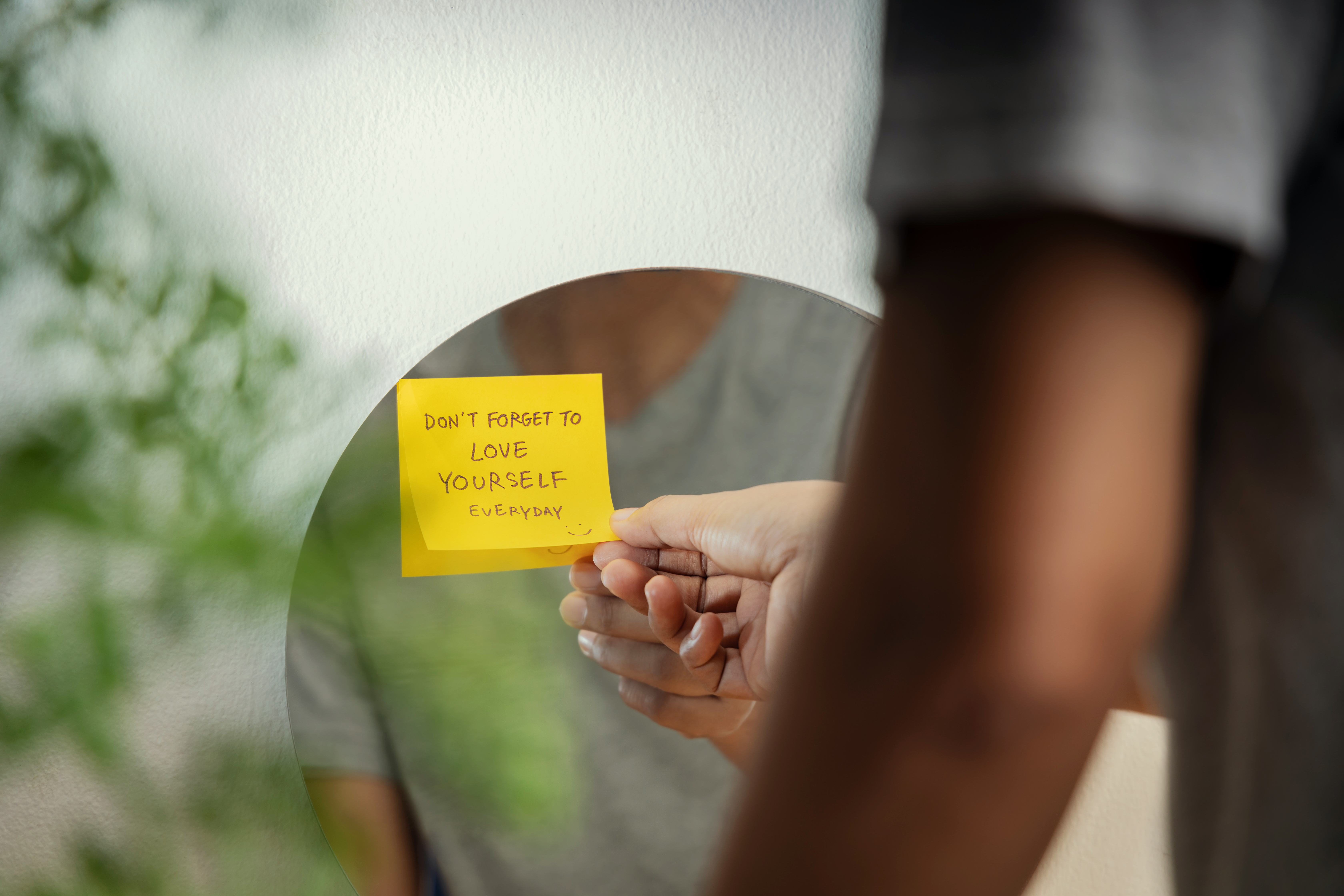18 Everyday CBT Exercises for Managing Mood and Stress
Your thoughts shape your world—and with the right tools, you can reshape both. Cognitive Behavioral Therapy (CBT) isn’t just for therapists’ offices anymore; it’s a powerful, everyday practice anyone can use to take charge of their emotional wellbeing. Whether you’re facing daily stress, lingering anxiety, or just trying to stay grounded in a fast-moving world, CBT offers a practical path forward. It’s built on one transformative idea: change your thoughts, and your life begins to shift. That’s why we’ve expanded our guide to 18 daily CBT exercises—simple, science-backed strategies to help you master your mood, reframe unhelpful patterns, and build emotional resilience. These aren’t abstract theories—they’re everyday habits that teach you how to respond rather than react, and how to find clarity even in chaos. Because life will always bring challenges—but with the right mindset, you’ll meet them with grace, confidence, and control. Let’s get started.
1. Understanding the CBT Framework

Before diving into the exercises, it's essential to understand the foundational principles of CBT. At its core, CBT is based on the cognitive model, which posits that our thoughts influence our feelings, which in turn affect our behaviors. This cycle can create patterns that either contribute to or alleviate stress and emotional imbalance. By recognizing and modifying these patterns, individuals can achieve significant improvements in their mental health. CBT emphasizes the importance of self-awareness, encouraging individuals to become more attuned to their thought processes and emotional responses. The structured nature of CBT makes it an accessible and practical approach for many. Unlike some therapeutic methods that delve into the past, CBT focuses on the present, providing actionable strategies for immediate application. This forward-thinking approach is particularly beneficial for stress management, as it equips individuals with the tools needed to address current challenges and prevent future stressors from taking hold. By understanding the CBT framework, you'll be better prepared to implement the exercises outlined in this article, setting the stage for meaningful change in your life.
2. Thought Record Journaling

Thought Record Journaling is a fundamental CBT exercise that helps individuals identify and challenge negative thought patterns. This exercise involves documenting your thoughts and emotions in response to specific situations, allowing you to analyze and reframe them. By regularly engaging in this practice, you can develop a greater awareness of your cognitive distortions and learn how to replace them with more balanced perspectives. This exercise not only fosters self-reflection but also encourages proactive problem-solving, empowering you to take control of your emotional responses. To begin Thought Record Journaling, start by identifying a situation that triggered a strong emotional response. Write down the thoughts that accompanied this experience, paying attention to any patterns or recurring themes. Next, assess the evidence for and against these thoughts, considering alternative interpretations. Finally, reframe your thoughts in a way that promotes a more balanced and realistic outlook. Over time, this exercise can help you break free from negative thinking patterns, reducing stress and enhancing emotional resilience.
3. Behavioral Activation

Behavioral Activation is a CBT technique designed to combat avoidance and inactivity, which are common symptoms of stress and depression. This exercise involves identifying and engaging in activities that bring you joy and fulfillment, thereby increasing your overall sense of well-being. By actively participating in positive experiences, you can counteract negative emotions and break the cycle of avoidance that often exacerbates stress. Behavioral Activation encourages individuals to take small, manageable steps towards re-engaging with life, fostering a sense of accomplishment and purpose. To implement Behavioral Activation, start by creating a list of activities that you find enjoyable and meaningful. These can range from simple pleasures, like reading a book or going for a walk, to more significant endeavors, such as pursuing a hobby or volunteering. Schedule these activities into your day, prioritizing them as you would any other important commitment. By consistently engaging in positive activities, you'll cultivate a more balanced emotional state, reducing stress and enhancing your overall quality of life.
4. Cognitive Restructuring

Cognitive Restructuring is a core component of CBT that involves identifying and challenging irrational or unhelpful thoughts. This exercise encourages individuals to examine the validity of their beliefs and replace them with more accurate and constructive alternatives. By altering your cognitive patterns, you can influence your emotional responses, leading to improved stress management and emotional balance. Cognitive Restructuring empowers individuals to take control of their thought processes, fostering a greater sense of agency and resilience. To practice Cognitive Restructuring, begin by identifying a negative thought that frequently occurs in response to stress. Analyze the evidence supporting and contradicting this thought, considering alternative perspectives. Challenge the validity of your initial belief, asking yourself if it's based on assumptions or facts. Finally, reframe your thought in a way that is more balanced and constructive. This exercise can be particularly effective in reducing anxiety and fostering a more positive outlook, equipping you with the tools needed to navigate stress with confidence.
5. Mindfulness Meditation

Mindfulness Meditation is a powerful CBT exercise that promotes relaxation and emotional balance by encouraging individuals to focus on the present moment. This practice involves cultivating awareness of your thoughts, feelings, and bodily sensations without judgment, allowing you to observe them with curiosity and acceptance. By regularly engaging in mindfulness meditation, you can develop a greater sense of self-awareness and emotional regulation, reducing stress and enhancing overall well-being. This exercise is particularly effective in fostering a sense of calm and clarity amidst the chaos of daily life. To begin Mindfulness Meditation, find a quiet space where you can sit comfortably without distractions. Close your eyes and focus on your breath, observing the sensation of each inhale and exhale. As thoughts and emotions arise, acknowledge them without judgment, gently redirecting your focus back to your breath. With practice, mindfulness meditation can help you cultivate a more balanced emotional state, enhancing your ability to manage stress and navigate life's challenges with grace and resilience.
6. Progressive Muscle Relaxation

Progressive Muscle Relaxation (PMR) is a CBT technique designed to reduce physical tension and promote relaxation. This exercise involves systematically tensing and relaxing different muscle groups, helping individuals become more aware of bodily sensations and release stress. By regularly practicing PMR, you can develop a greater sense of physical and emotional well-being, reducing the impact of stress on your body and mind. This exercise is particularly beneficial for individuals who experience muscle tension or physical symptoms of stress. To practice PMR, find a comfortable position and take a few deep breaths to relax. Start with your toes, tensing the muscles for a few seconds before releasing them. Gradually work your way up through each muscle group, including your legs, abdomen, arms, shoulders, and face. Focus on the contrast between tension and relaxation, allowing your body to unwind and release stress. With regular practice, PMR can help you cultivate a more relaxed and balanced state, enhancing your ability to manage stress and maintain emotional equilibrium.
7. The ABC Model

The ABC Model is a CBT framework that helps individuals understand the relationship between their thoughts, emotions, and behaviors. This exercise involves identifying the Activating event, Beliefs about the event, and Consequences of those beliefs, allowing individuals to analyze and modify their cognitive patterns. By gaining insight into the ABC Model, you can develop a greater awareness of how your thoughts influence your emotional responses, empowering you to manage stress more effectively. To apply the ABC Model, start by identifying an activating event that triggered a strong emotional response. Next, examine your beliefs about the event, considering how they contributed to your emotional reaction. Finally, assess the consequences of these beliefs, including any behaviors or emotions that resulted. By analyzing this cycle, you can identify cognitive distortions and replace them with more balanced perspectives, reducing stress and enhancing emotional resilience.
8. Exposure Therapy

Exposure Therapy is a CBT technique that involves gradually confronting feared situations or stimuli to reduce anxiety and stress. This exercise helps individuals overcome avoidance behaviors and develop a greater sense of control over their emotional responses. By systematically exposing yourself to feared situations, you can desensitize your emotional reactions, reducing stress and enhancing your ability to cope with challenging circumstances. To practice Exposure Therapy, start by identifying a situation or stimulus that triggers anxiety or stress. Create a hierarchy of feared situations, ranking them from least to most distressing. Gradually expose yourself to each situation, starting with the least distressing and working your way up. Use relaxation techniques, such as deep breathing or mindfulness, to manage your emotional responses during exposure. With time and practice, Exposure Therapy can help you develop greater confidence and resilience, reducing stress and enhancing emotional balance.
9. Self-Compassion Practices

Self-Compassion Practices are CBT exercises that encourage individuals to treat themselves with kindness and understanding, fostering emotional resilience and reducing stress. This approach involves recognizing your own suffering and responding with empathy and support, rather than criticism or judgment. By cultivating self-compassion, you can develop a more balanced and nurturing relationship with yourself, enhancing your ability to manage stress and maintain emotional well-being. To practice Self-Compassion, start by acknowledging any negative self-talk or criticism you may be experiencing. Challenge these thoughts by considering how you would respond to a friend in a similar situation. Offer yourself the same kindness and understanding, reminding yourself that everyone experiences challenges and setbacks. Practice self-care activities that nurture your physical, emotional, and mental well-being. Over time, self-compassion practices can help you develop a more positive and supportive relationship with yourself, reducing stress and enhancing emotional resilience.
10. Gratitude Journaling

Gratitude Journaling is a CBT exercise that involves regularly reflecting on and documenting the positive aspects of your life. This practice encourages individuals to focus on what they have, rather than what they lack, fostering a sense of appreciation and contentment. By cultivating gratitude, you can shift your perspective from negative to positive, reducing stress and enhancing emotional well-being. Gratitude Journaling is a simple yet powerful tool for promoting emotional balance and resilience. To start a Gratitude Journal, set aside a few minutes each day to write down three things you are grateful for. These can be simple pleasures, like a warm cup of tea, or more significant blessings, such as supportive relationships or personal achievements. Reflect on the emotions and experiences associated with each entry, allowing yourself to fully appreciate the positive aspects of your life. With regular practice, Gratitude Journaling can help you develop a more positive outlook, reducing stress and enhancing your overall sense of well-being.
11. Problem-Solving Skills

Problem-Solving Skills are an essential component of CBT, helping individuals address and overcome challenges in a structured and effective manner. This exercise involves identifying problems, generating potential solutions, and evaluating their effectiveness, empowering individuals to take control of their circumstances and reduce stress. By developing strong problem-solving skills, you can enhance your ability to navigate life's challenges with confidence and resilience. To practice Problem-Solving Skills, start by clearly defining the problem you are facing. Brainstorm a list of potential solutions, considering both short-term and long-term options. Evaluate the pros and cons of each solution, selecting the most feasible and effective option. Develop a step-by-step action plan for implementing your chosen solution, monitoring your progress and making adjustments as needed. With practice, problem-solving skills can help you develop a proactive approach to managing stress and achieving emotional balance.
12. Visualization Techniques

Visualization Techniques are CBT exercises that involve creating mental images to promote relaxation and emotional balance. This practice encourages individuals to use their imagination to visualize positive outcomes or calming scenes, reducing stress and enhancing well-being. By regularly engaging in visualization, you can develop a greater sense of control over your emotional responses, fostering resilience and confidence in the face of stress. To practice Visualization Techniques, find a quiet space where you can relax without distractions. Close your eyes and take a few deep breaths to center yourself. Visualize a scene or outcome that brings you peace and happiness, such as a serene beach or a successful presentation. Focus on the details, using all your senses to create a vivid mental image. Allow yourself to fully immerse in the experience, letting go of stress and tension. With practice, visualization techniques can help you cultivate a more balanced emotional state, enhancing your ability to manage stress and navigate life's challenges.
13. Assertiveness Training

Assertiveness Training is a CBT exercise that helps individuals communicate their needs and boundaries effectively, reducing stress and enhancing emotional balance. This practice involves developing the skills needed to express your thoughts and feelings confidently and respectfully, fostering healthier relationships and a greater sense of self-worth. By becoming more assertive, you can reduce the stress associated with conflict and misunderstandings, enhancing your overall well-being. To practice Assertiveness Training, start by identifying situations where you struggle to assert yourself. Reflect on the thoughts and emotions that arise in these situations, considering how they impact your behavior. Develop clear and concise statements that express your needs and boundaries, practicing them in a supportive environment. Use "I" statements to communicate your perspective, focusing on your feelings and needs rather than blaming or criticizing others. With practice, assertiveness training can help you develop more effective communication skills, reducing stress and enhancing your emotional resilience.
14. Values Clarification

When stress hits, we often react out of urgency instead of alignment. Values Clarification helps you reconnect with what actually matters to you. In CBT, knowing your core values—like growth, connection, or stability—serves as a compass. Begin by listing what you care about most. Then ask: Are my thoughts and actions reflecting these values? When you align your daily decisions with what you truly value, even difficult situations feel more meaningful. This exercise reduces emotional friction, improves clarity, and helps you respond—not react. Revisit your list often to recalibrate, especially during periods of overwhelm or uncertainty.
15. Socratic Questioning

When negative thoughts take over, Socratic Questioning invites you to interrogate them like a wise skeptic. This CBT tool challenges automatic assumptions by asking: What’s the evidence? What else could be true? Is this thought helpful? By guiding yourself through these questions, you begin to see the cracks in distorted beliefs. The goal isn’t to force optimism—it’s to find a more balanced, accurate view. Regular practice helps dismantle mental spirals and gives your rational brain a seat at the table. Use it whenever your inner critic gets loud or your stress response feels out of proportion.
16. Mental Filtering Reversal

Mental filtering is a common cognitive distortion where you fixate on the negative and ignore the positive. This subtle bias can leave you feeling like everything’s going wrong—even when it’s not. Flip the filter. Each evening, recall one moment where something went right—a compliment, a task completed, a moment of calm. Write it down. Then ask: Why did this matter? What does it say about me or my growth? This reversal helps retrain your brain to notice what’s working, not just what’s lacking. Over time, it builds a more resilient, fair-minded inner narrative.
17. Opposite Action

When your emotions scream “retreat,” CBT sometimes suggests the opposite: engage. Opposite Action involves deliberately doing what your emotions don’t want you to do—but what you know is healthy. Feeling anxious? Speak up in the meeting. Feeling hopeless? Take a walk. This isn’t about denying emotions—it’s about breaking unhelpful cycles. The action gently rewires your brain by offering new emotional outcomes. Start small. Pick one avoided task each day and act opposite to your urge. You’ll often find the emotion softens not by resisting it, but by proving it wrong.
18. Thought Defusion

In CBT, defusion helps you create space between you and your thoughts. Instead of saying, “I’m a failure,” say, “I’m having the thought that I’m a failure.” This subtle shift disarms the thought’s emotional charge. One simple defusion technique: sing the thought aloud to a silly tune, like “Happy Birthday” or say it in a cartoon voice. It sounds ridiculous—but that’s the point. It helps reveal how arbitrary and transient thoughts really are. When you stop identifying with every mental narrative, stress loses its grip. Use defusion to step back, observe, and let thoughts pass like clouds.
Rewire Your Mind, Reclaim Your Day

Mastering your mood isn’t about being endlessly positive—it’s about being aware, intentional, and equipped. These 18 daily CBT exercises aren’t quick fixes or lofty theories—they’re real tools designed to interrupt the mental autopilot and put you back in the driver’s seat. From thought reframing to value alignment, each practice gives you a sharper lens, helping you respond to life with clarity instead of chaos. The beauty of CBT lies in its simplicity: small mental shifts, repeated daily, can transform how you experience the world. Whether you're facing burnout, navigating relationships, or simply trying to feel more grounded, this toolkit meets you where you are—and helps you rise. So start with one. Then another. Over time, these habits won’t just change your day. They’ll change your life. Because you deserve more than survival—you deserve a mind that works with you, not against you.
